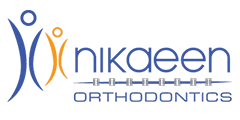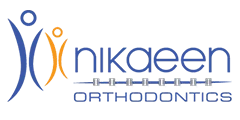Orthodontic Q&A
About Treatment Questions
Metal braces, made from stainless steel, are most popular with kids and teenagers as they love the different colors available for ligature ties. Metal braces are smaller and more comfortable than ever before.
Translucent or clear ceramic braces are very popular with adults. They’re much less noticeable than conventional metal braces. However, because the ceramic material can be abrasive to enamel, they usually can be placed only on the upper teeth. They’re also more expensive.
Invisalign is a new treatment option that utilizes clear, plastic “aligners” to move the teeth. This is a brand new treatment option that is limited only to adult patients with fairly simple orthodontic problems. Dr. Nikaeen can tell you if you’re a candidate for Invisalign braces.
Lingual braces are mounted behind a patient’s teeth and are barely visible. They were used many years ago, before the advent of more cosmetic-style braces. Generally, lingual braces are more uncomfortable than standard braces.
You may have heard of “speed braces.” Self-ligating braces, also known as “speed braces,” don’t need the elastics or metal-tie wires required for traditional braces to hold the arch wires in place. This method places less strain on the patient’s teeth and gums. Several self-ligating braces use different methods. Dr. Nikaeen offers the popular Damon Braces Therapy.
Yes! If Dr. Nikaeen finds you are a candidate, she can use Invisalign, a state-of-the-art alternative to braces that is virtually undetectable to other people. Instead of using brackets and wires, Invisalign straightens your teeth with a series of clear, customized, removable appliances called aligners.
Today’s braces are generally less noticeable than those of the past. Brackets, the part of the braces that hold the wires, are bonded to the front of the teeth. These brackets are usually metal. However, you also can request clear and less-noticeable ceramic brackets.
After your braces are removed, you’ll wear a retaining appliance to hold your teeth in position. Retainers are just as important as braces in the treatment plan. Dr. Nikaeen will choose the right type of retainer for your situation.
You’ll need to wear your retainer until your teeth settle into a better bite and your bones and muscles adapt to their new dental arrangement.
Phase I, or Interceptive Treatment, usually begins while children have most of their baby teeth and a few of their permanent front incisors. This often occurs around age seven. The goal of Phase I therapy is to treat a moderate or severe orthodontic problem early in life, so as to reduce or eliminate it. These problems include skeletal discrepancies, crossbites and crowding.
Phase I treatment takes advantage of a child’s early growth spurt and turns a difficult orthodontic problem into a more manageable one. This often helps reduce the need for extractions or surgery and delivers better, long-term results and treatment options. Most Phase I patients require a second phase of treatment to achieve an ideal bite.
Phase II treatment usually occurs at a later age. Usually, it’s important to wait for the remaining permanent teeth to erupt before Phase II begins. This most commonly occurs at age 12 or 13. The goal of Phase II treatment is to achieve an ideal bite with all of the permanent teeth.
Early Treatment Questions
The American Association of Orthodontists recommends evaluating children by age seven. Difficult treatment later in life can be avoided through early detection and corrective care.
General Questions
It is not easy to assess if your child requires orthodontic treatment. However, the following can help you determine if you should seek out further advice.
First, ask your little one to open his or her mouth so that you can examine his or her teeth. Your child may need treatment if any teeth are crooked, has narrow arches, you notice gaps between teeth, or if any teeth overlap.
Second, while biting down and flashing a nice big smile, determine if the top teeth line up with the bottom teeth. If the top teeth protrude above the bottom teeth, or the top teeth cover more than 50% of the bottom teeth, or if the top teeth lie behind the bottom teeth, you should schedule an appointment with Dr. Nikaeen as soon as possible.
Next, look at the alignment of your child’s jaw. Does the jaw shift off-center when he or she bites down? If you notice any misalignment or jaw shifting, your child may require early orthodontic intervention.
These are just some of the orthodontic problems your child may be experiencing. A free consultation will let you know more.

Current Patient: (310) 444-1113
New Patients: (310) 929-6220
info@invisibraces.com
11620 Wilshire Blvd. Suite 440,
Los Angeles, CA 90025




